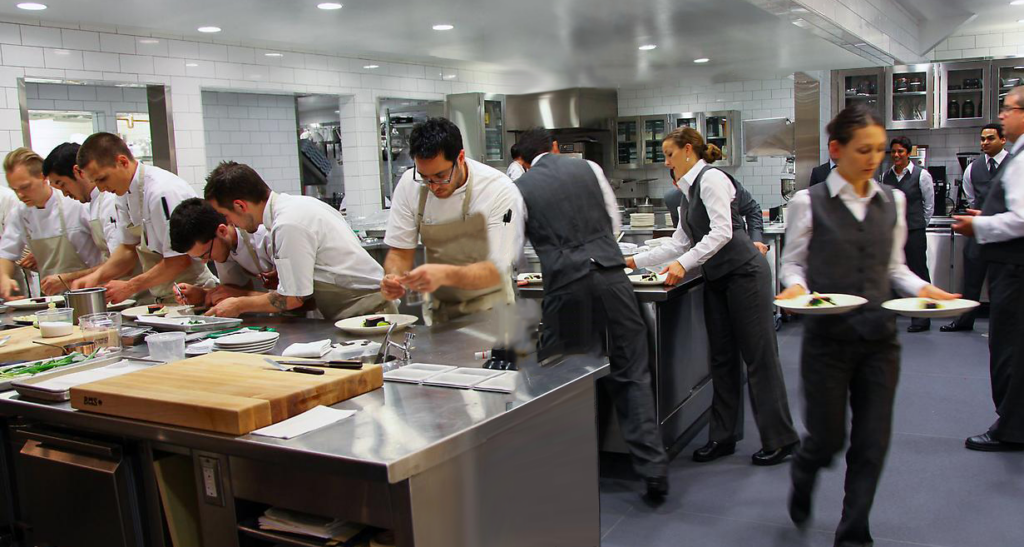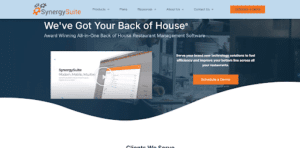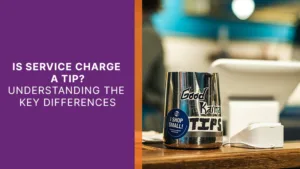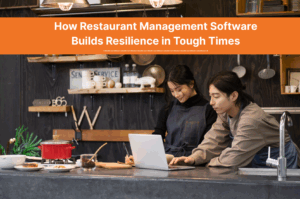Restaurant labor costs, like labor costs in the rest of the economy, typically account for a large portion of a restaurant’s expenses.
Those costs are rising.
Rising restaurant labor and operating costs present a challenge. Managing those costs while dealing with increasingly scarce labor will present an ongoing and complex challenge for the entire industry. Finding a solution to this challenge for your restaurant can be the key to ongoing success and can give you a leg up on less responsive competitors.
Payroll is complicated. It’s not always easy to track every dollar you save and spend, but it’s essential. There are hourly wages, payroll taxes, and gratuities.
Few business segments are struggling more than the restaurant industry to adapt to rising labor costs. As labor costs continue to rise, even modest wage increases can profoundly impact an operation’s profitability. Monitoring labor costs is more crucial than ever, but thankfully, back-office systems can automate and help lower labor costs. In this article, you’ll learn how successful restaurants use these tools to optimize their average labor cost percentage. But first, let’s answer a few specific questions like: what is labor cost percentage, and what is a good percentage of labor cost?
What is restaurant labor cost percentage?
Restaurant labor cost percentage is a metric that ties total labor costs directly to revenue. When calculating labor cost percentage, you determine how much money you spend on labor to bring in revenue. Most often, labor cost is calculated as a percentage of overall sales.
How do you calculate labor costs in a restaurant?
Calculating restaurant labor cost percentage is pretty simple. Just divide the total cost of labor over a desired period by the total sales from that same period. Payroll/revenue=restaurant labor cost. You can determine labor cost percentage per day, week, month, or even year with a simple formula. Here’s an example.
If your restaurant paid employees $4,000 in a week and brought in $10,000 in revenue, a labor cost percentage calculation would be as follows:
4,000/10,000=.4 x 100 = 40%
What is a good percentage of labor cost?
While it varies by industry, most restaurants consider a good percentage of labor costs within the operating range of 25% to 35%. Generally, the more lucrative the industry, the higher the labor costs. For instance, many fine dining establishments have a percentage of labor cost of around 35%, while some quick-service restaurants may average closer to 25%. The average labor cost percentage is somewhere between 29%-33%.
There is no ideal restaurant labor cost. Different types of restaurants will offer different types of fares, feature different services and amenities, operate in different areas, and have different types of staff members. Because some restaurants must have higher labor costs in comparison to others, they contribute differently to total operating costs. Lowering restaurant labor costs is sometimes simple, and sometimes complex.
A fast-food franchise that pays high school students minimum wage will have very different labor costs (and revenues) than a Michelin-starred gourmet restaurant with a staff of experienced sommeliers making recommendations for wine vintages that are older than the diners. Rather than dealing with real numbers, presenting labor costs as a percentage may be. That’s where the restaurant labor cost formula comes in. This formula will allow you to determine your restaurant’s ideal labor cost percentage.
How do you reduce your restaurant labor costs?
Wondering how to reduce labor costs in a restaurant? Here are some tips to save money and increase profits:
- Verify time and attendance
- Simplify predictive scheduling
- Reduce overages with overtime alerts
- Regularly calculate sales per labor hour
1. Verify time and attendance
Employees punching in for their late-arriving friends—a.k.a “Buddy clocking”—disappear when using a biometric (fingerprint) device to identify employees on-premise. No more paying for employees who show up late or stay beyond their scheduled time. A digital system also ensures employee hours are recorded accurately. Not so long ago, managers added up employee time cards manually, creating opportunities for discrepancies. With a digital system like SynergySuite, time on the job working is tracked automatically and accurately to the second. Same for taking mandated breaks. Each time hourly staffers take a breather, that time is not only deducted automatically from their shift totals, but it’s also documented permanently.
2. Simplify predictive scheduling
Understaffing and overstaffing can substantially increase restaurant labor cost while simultaneously being damaging to profits. Guests who wait too long for service have a bad experience and don’t return, and having too many employees on hand for sales demand swells labor costs. A back-office system equipped with a predictive scheduling feature can almost eliminate staffing guesswork. These systems can tap into historical sales data from the POS and suggest staff scheduling based on forecasted sales. No more forgetting to staff up for special events or staff leanly when sales are historically slow.
3. Reduce overages with overtime alerts
Restaurant staffing optimization is a key element in keeping your restaurant labor cost in an acceptable range, but it’s also a difficult metric to track and accurately represent. Amid a busy shift, it’s nearly impossible to know which hourly staffers are approaching overtime. The challenge of tracking restaurant labor cost increases for multi-unit operators. But with a back-office system tracking each staffer’s time on the clock, unnecessary overtime can be reduced and even eliminated with automated alerts. Properly programmed, a back-office system will send managers and owners real-time alerts with text messages or push notifications, signaling specific employees are approaching overtime, greatly simplifying the decision to keep or cut staff. Receiving these through a cloud-based, back-office system also allows multi-unit area managers and owners to focus on labor problems at specific units and manage them remotely.
4. Regularly calculate sales per labor hour
Even when dining rooms are full, patrons may be lingering rather than spending money on food. This is another time when managers can struggle to decide whether to cut staff. Applying this to a sales-per-labor-hour metric gives clear details on whether the labor on hand is too much for the number of customers being served. A back-office system can track this information in real-time, allowing managers to cut staff if too slow, or call in reinforcements if the pace of business becomes overwhelming. Multi-unit operators can monitor each manager’s labor allocation at all units and spot potential labor cost issues before they occur.
Using cloud-based, back-office technology to manage costs tightly virtually ensures profitability, even when sales are down. By verifying time and attendance, using predictive scheduling tools, responding to overtime alerts, and applying the sales per labor hour metric, restaurant owners like you can lower labor cost percentagespercentage and put more of their hard-earned money in the bank.
Request a personalized demo of the SynergySuite platform to learn more about reducing your restaurant’s labor costs by 2-8%.
Frequently asked questions about restaurant labor cost
Restaurant labor cost will vary quite a lot from restaurant to restaurant and from locale to locale. Rather than trying to define a specific real number, it makes more sense to compare the cost of labor at a restaurant to its revenue and express this number as percentage.
A healthy restaurant labor cost range as a percentage of revenue (in any type of restaurant) is somewhere between 25% and 35%. A restaurant labor cost lower than that is probably not realistic, a cost over that is suggestive of labor inefficiency.






